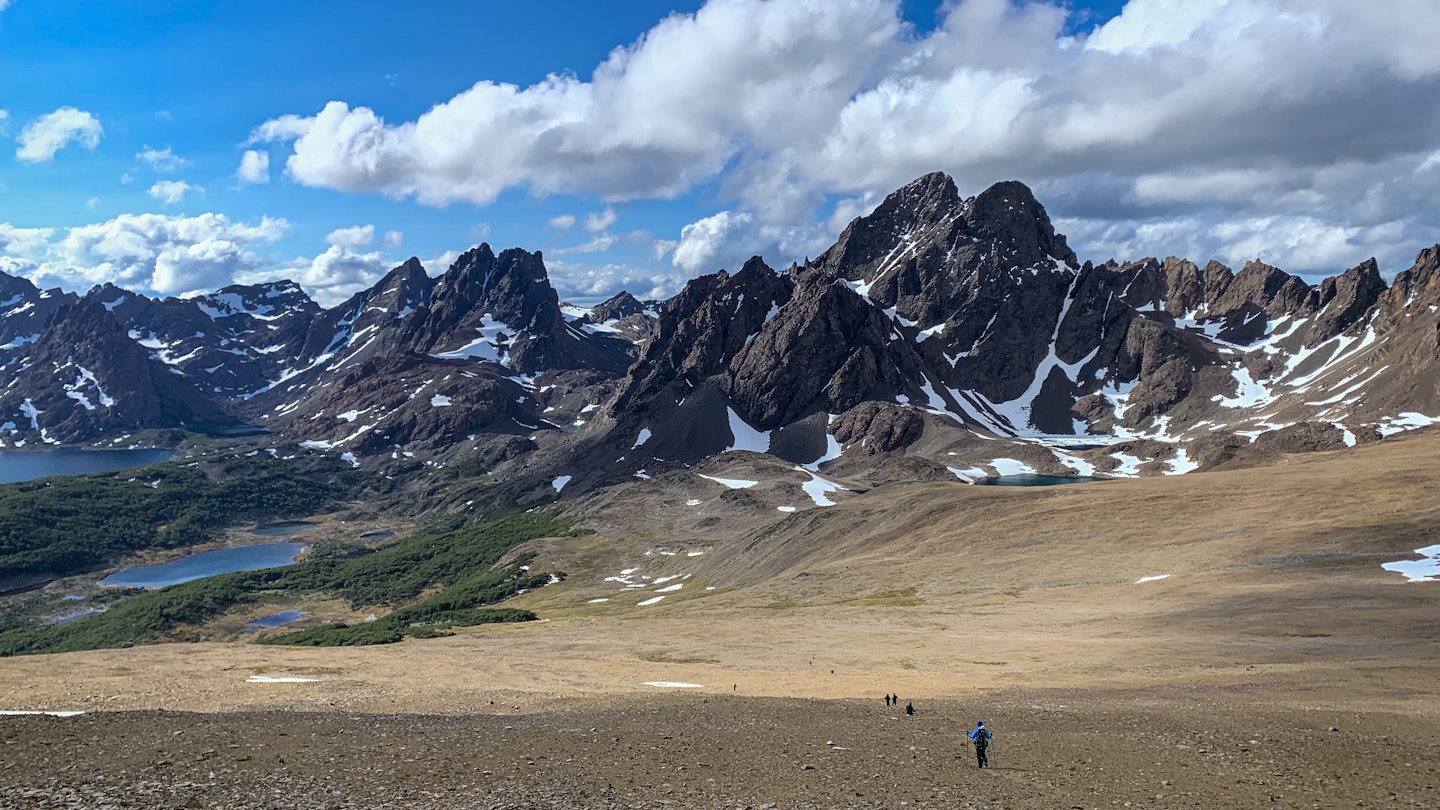The Dientes de Navarino Trek: Patagonia’s Hidden Gem
The wilds of Patagonia are no longer a well-kept secret, with tourism to awe-inspiring destinations like Torres del Paine becoming increasingly popular. However, there are still corners that remain relatively untrafficked, and one of these holds a unique superlative – the southernmost trek in the world.

The Dientes de Navarino trek cuts around and through Isla Navarino’s ‘Teeth’ – a jagged mountain range with a striking silhouette sharply rising from the ground. Here, you can test your grit in one of the most unpredictable and remote parts of Chilean Patagonia.
Introducing Isla Navarino
Isla Navarino sits at the southernmost tip of Chile, even further south than the city of Ushuaia, a popular jumping-off point for Antarctic cruises. The island is part of the Region of Magellanes and Chilean Antarctica, and its land is categorized as polar tundra. The journey to get here is half the adventure, and once you arrive, the isolation is tangible.
The island’s main outpost, Puerto Williams, huddles along the edge of the glassy Beagle Channel, a small, lonesome cluster of weathered buildings punctuated by a couple of ecolodges and a marina. The Dientes trail starts right in the town’s backyard, with its first leg being a popular day hike for locals.

Why Go?
Beyond checking an item off your bucket list, why should the Dientes trek be on your radar? Sometimes hikes are beautiful, but the view remains the same throughout – not the case with Dientes. The sheer variety of landscapes you’ll encounter along the trail is the selling point. Each day yields a view that contrasts with the one before it. Valleys full of gnarled lenga trees, snow-covered passes, lagoons releasing mist into the wind, rocky balds, and striated mountain peaks loom around every corner. If you appreciate expansive views combined with enchanting details, this trek is for you.

Trek Details
This 53 km trek can take anywhere from four to five days to complete, depending on your pace. We recommend taking your time, as the distances are long and the views expansive; there’s simply no fun in rushing. Campsites are scattered along the trek, but there are no amenities or refuges on the trail – everything needs to be carried in and out, including a very sturdy tent.
The altitude here is not very high (with the highest point only hitting 859m), but each day accumulates a fair bit of elevation gain as you hike up and down the passes. Distances between official campsites range from 8–12 km.
The prime time to hit the trail stretches between December through March – the Patagonian summer – but this doesn’t guarantee good weather. The climate is volatile due to strong winds crisscrossing the island from three separate directions. In one day, you might experience snow, sleet, rain, and sunshine.

Guide or No Guide?
There’s no sugarcoating it – this trek is difficult. While it can be done independently, we highly recommend enlisting the help of a guide unless you are a very experienced trekker. The terrain is challenging, ranging from shifty rock shards to unstable boulders to mucky mud up to your knees. Strong ankles and knees are a prerequisite, and even then the potential for injury is significant. Having someone trained in safety protocols is always a plus.
Moreover, the trail itself often resembles more of a shadow than a well-marked path in many areas. It’s very easy to lose your way, particularly in the snowy and rocky sections, compounded by the threat of new snow obscuring the route. Consequently, attempting this trek alone is not advisable. Groups are truly the best way to go in case of an emergency.

Do I Need a Permit?
You do not need a permit in advance to hike the Dientes de Navarino trek, but you must check in at the local police station before you set out. Here, you’ll provide your personal information and your planned return date, ensuring they know to look for you if you haven’t checked back in by that time.
What Should I Bring?
Packing for the Dientes trek poses a challenge – you want to be prepared, yet you must also ensure you pack light. In addition to your normal trekking gear, gaiters, hiking poles, and waterproof boots are absolute essentials. For additional insights on what should make it into your packing list, please consider your options before embarking on this adventurous journey.
Bailey Freeman traveled to Chile with support from the Chilean Tourism Board. iBestTravel contributors do not accept freebies in exchange for positive coverage.




